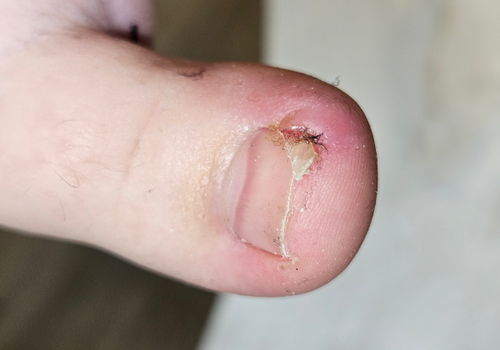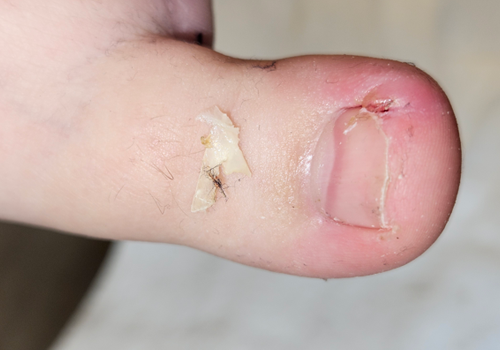Ingrown Toenails Ottawa
Free parking and Wheelchair Accessible
What are ingrown toenails?
Onychocryptosis, also known as ingrown toenails, occur when the edge or corner of the toenail grows into the skin, rather than over it. It usually causes pain, swelling, redness and tenderness around the affected nail, most commonly the big toe.


Ingrown toenails can be caused by a variety of factors, including involuted (curved) and thick toenails, improper nail trimming, wearing tight footwear that puts pressure on the toes, and fungal infections.
If left untreated, the toenail can break the skin, which may lead to an infection. People with diabetes, circulatory diseases, immunodeficiency or other underlying conditions are encouraged to perform regular self-checks and seek a medical professional if they suspect an ingrown toenail, as they face a greater likelihood of developing complications from it.
Some mild cases can be resolved at home, but if the ingrown toenail isn’t properly treated by a medical professional, major complications may arise. If you experience symptoms like pain, swelling, redness, or liquid/pus discharges, please do not attempt to resolve the issue on your own and seek medical attention.
Treatment for Ingrown Toenails
At Footopia, all treatments for ingrown toenails are non-invasive and non-surgical. The foot care nurse will numb the toe with a topical spray, then carefully cut and remove the nail splinter that is causing pain. If the patient presents involuted (curved) toenails, braces might be recommended.
Nail braces are a newly developed corrective treatment for involuted toenails. This treatment offers a pain-free and non-invasive alternative to surgery. Just like tooth braces take a long period of time to straighten teeth, nail braces may require a year or more to permanently correct the curvature of the toenails.

